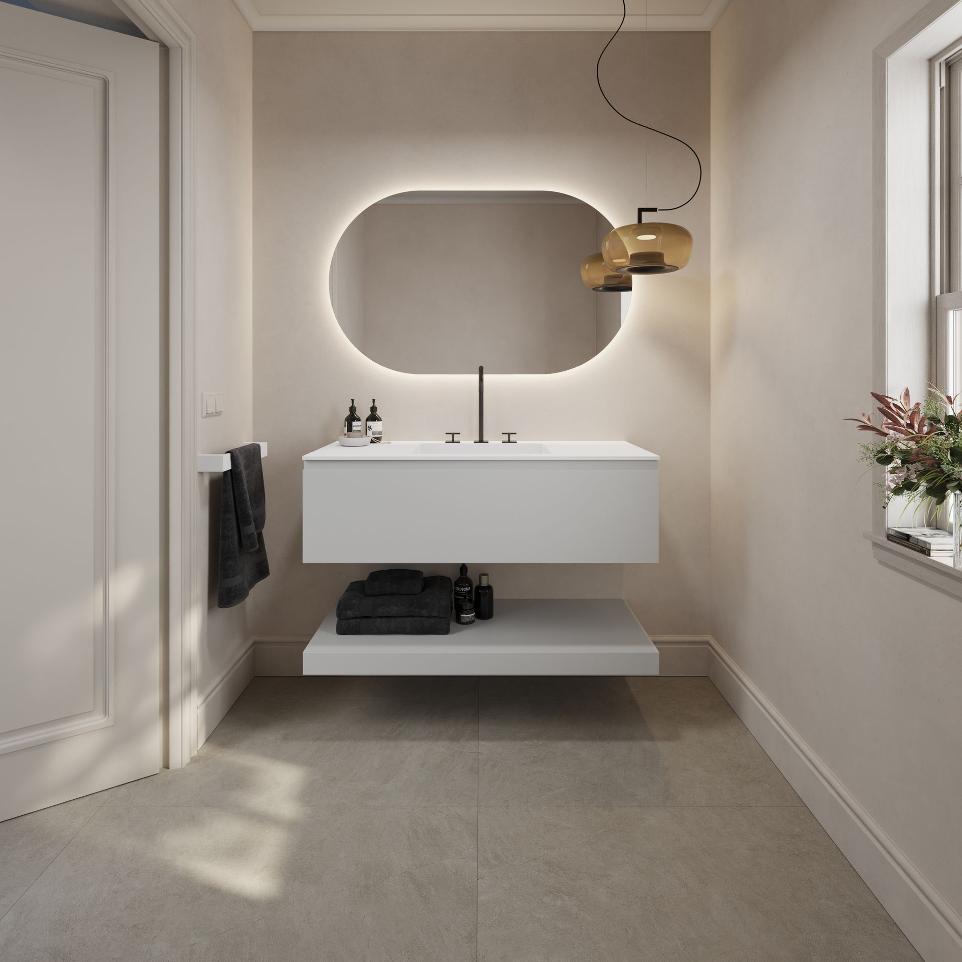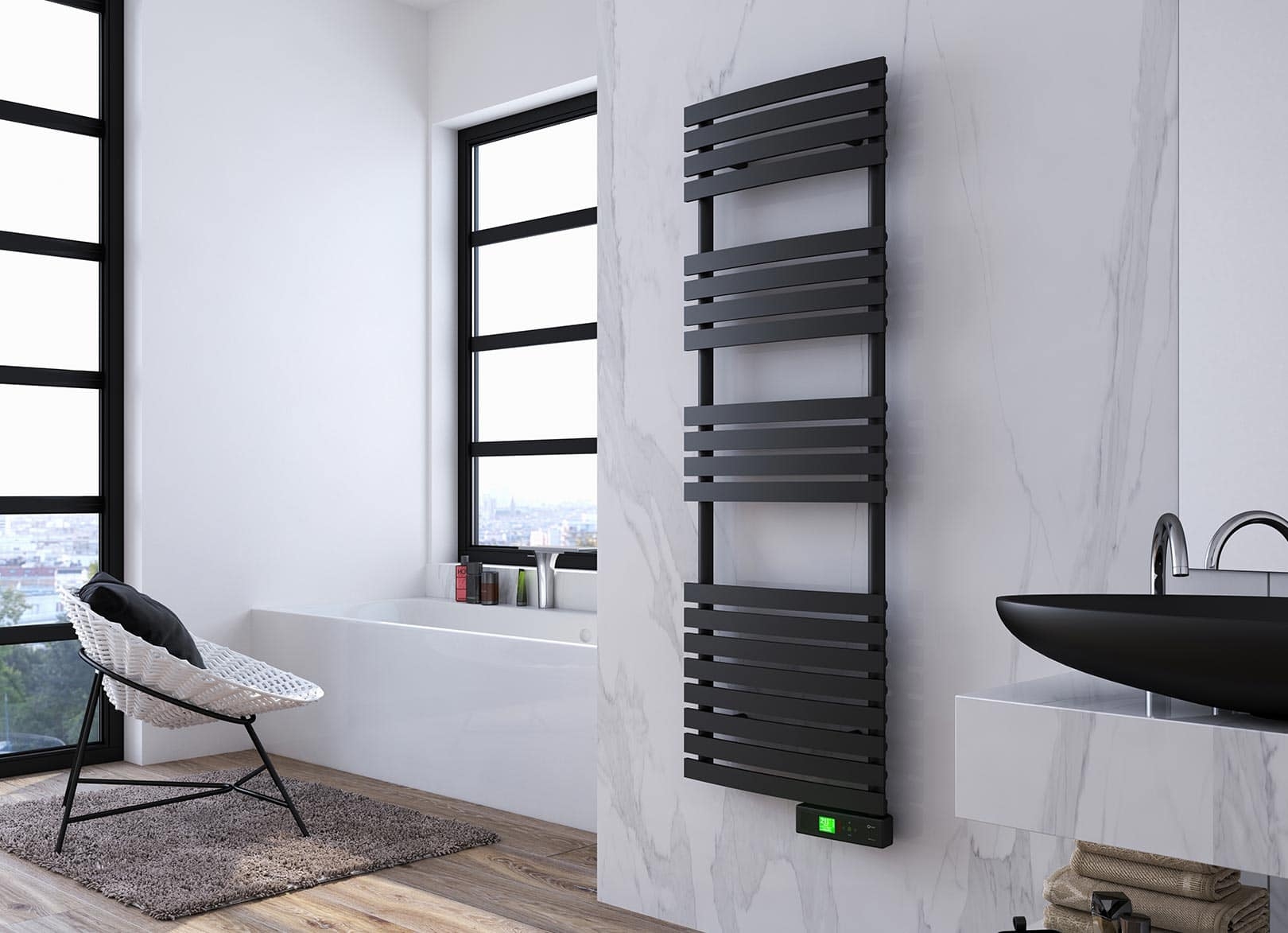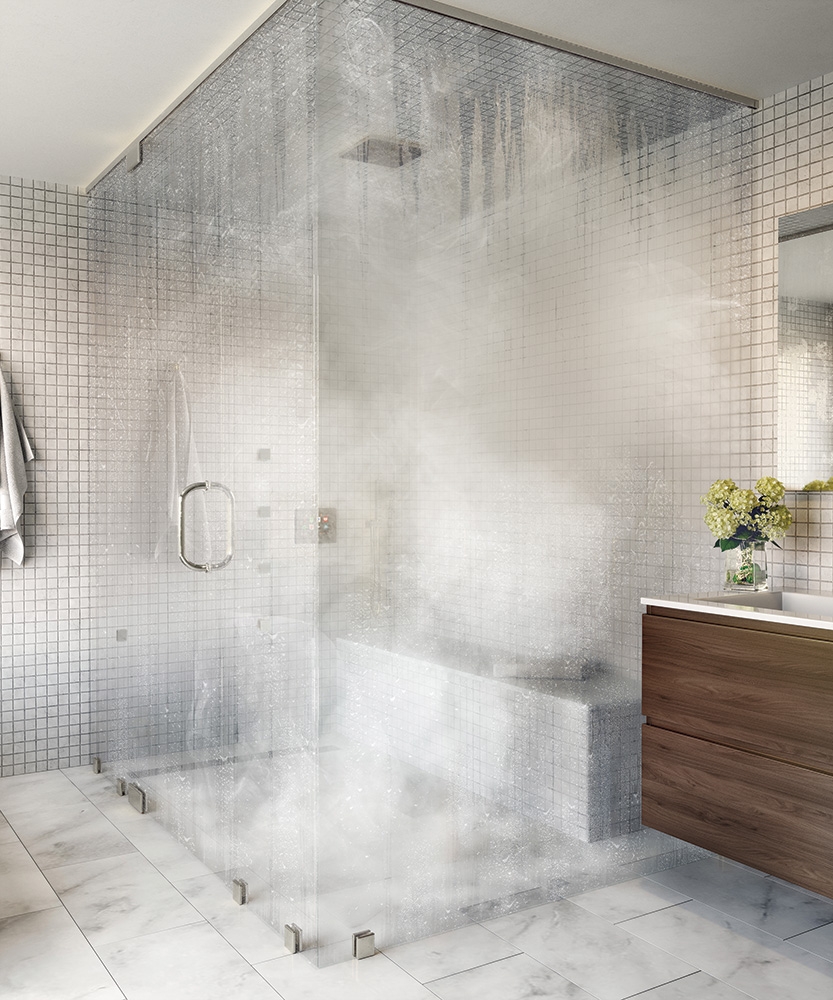.
How to Warm Up a Cold Bathroom
“How to make my bathroom warmer” is a common question for homeowners. The reason bathrooms are often so much colder than other rooms in the house is due to amount of reflective surfaces—such as ceramic—which feel cool to the touch and can leave a bathroom or restroom feeling chilly to be in. Heating up a bathroom is a fairly simple problem to solve though, so let’s take a look at some of the solutions.
Put in a heated towel rail

Electric Bathroom Heater - Rointe
Installing a heated towel rail is easy if it’s electric. You simply mount it above a power S—safely enough away from any splashing water—plug it in and you have instant heat in your bathroom. Plus, nice warm towels—what’s not to love? Just make sure you get one that’s big enough to heat the space it’s situated in. Also, be mindful that an electrically heated towel rail may be more expensive to run than a gas towel radiator, depending on your electricity source.
Plumbing a towel rail into the central heating system is a little more complicated and, if you’re not a bathroom DIY expert, you’ll need to find a plumber to do the work for you. However, it’s safer than bringing an electrical appliance into your bathroom and is potentially more cost-effective.
Install underfloor heating
Bathroom underfloor heating is low-maintenance and could reduce the amount of energy you use on heating the space—it also helps you to save space as it means no radiators.
Electric underfloor heating is easier to install but may be more expensive to run than a water-based system, which will require you to lay pipes under the floor—a big job, but potentially worth it in the long run. The benefit of electric underfloor heating is that enables you to control the temperature in the individual room.
Whichever type of underfloor bathroom heating you choose, it will work well with a wood, tile or stone floor.
Buy a bathtub that retains heat
Different types of bathtubs have different heat retention properties so, if warmth is one of your main concerns in the bathroom, choose one of the materials known to perform best. These include copper, cast iron, solid surface, marble and acrylic. A copper tub likely holds the heat of water for longest, while a cast iron bathtub, though slower to heat up than others, will keep your water warmer for an extended period of time. Solid surface bathtubs, such as Corian and other stone resin tubs, are also recognised for having excellent heat retention properties, so you can expect to have a long, comfortable bath without needing to add hot water. Choosing a bathtub with a double wall structure, such as our Ursa freestanding bath, is a great way to maximise these heat retention properties even further, as the air cavity between the walls provides natural insulation.
Also, consider the shape of your tub. A bathtub with a wider rim than the base will lose heat faster, as will a shallow bathtub. A deep tub with a rim similar in size to the base will retain heat much more effectively. Ultimately, your bathtub has to fit in with the overall design of your bathroom, so it’s all about balancing aesthetics and practicality.
Consider putting in a steam shower

Steam Shower - Thermasol
‘What is a steam shower?’, you may be wondering. Steam showers are to a regular bathroom what saunas are to a spa. They generate soothing, warm steam instead of water, which is very eco-friendly as they use a lot less water than regular showers.
Plus, not only do they give you a relaxing, luxury bathroom experience and potentially benefit the body’s circulatory system, they also help to warm the space up. Don’t forget, you’ll need a vapour barrier to stop the steam escaping, so you get the full experience.
Reinstate fireplaces in old bathrooms

Fireplace in a Luxury Bathroom - New York Magazine
If you’re remodelling the bathroom in an older house, it may well have a fireplace as—back before modern heating methods—that was really all you could do to warm the bathroom up. The thing about a fireplace in the bathroom is that it can look incredibly beautiful and luxurious. So why not think about reinstating it?
Imagine slipping into the bathtub and soaking in front of a roaring fire—what a cosy, relaxing experience. Just make sure to get your chimney swept at regular intervals and be mindful that you’ll have a little ash to sweep out each time it cools down. Fireplaces in bathrooms are stunning, but they’re not low-maintenance. And, if you don’t light them to avoid clean-up, a bathroom fireplace can actually make the room colder.
Looking for something else to read? Check out our article on retro-futurist interior design.